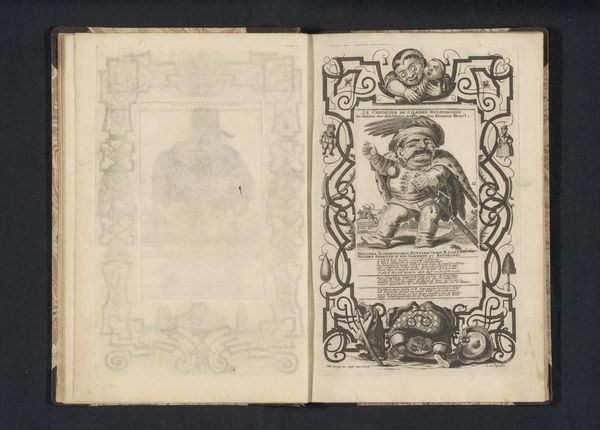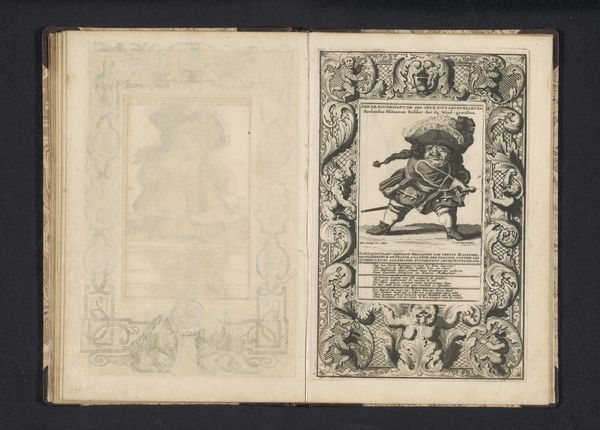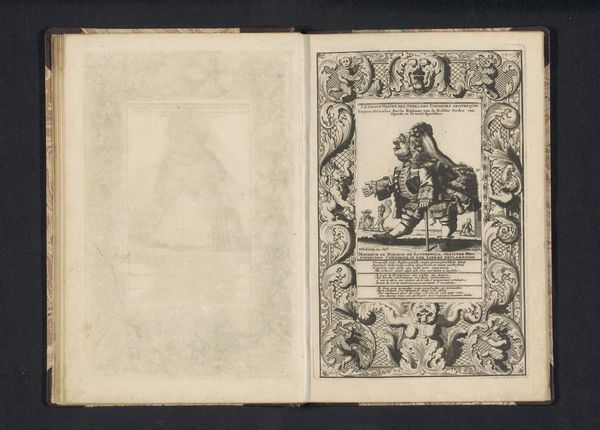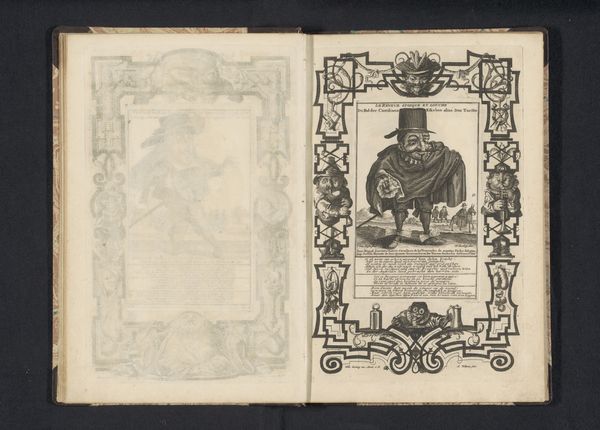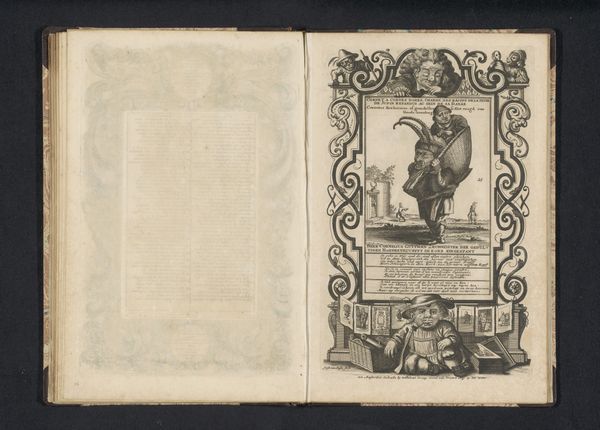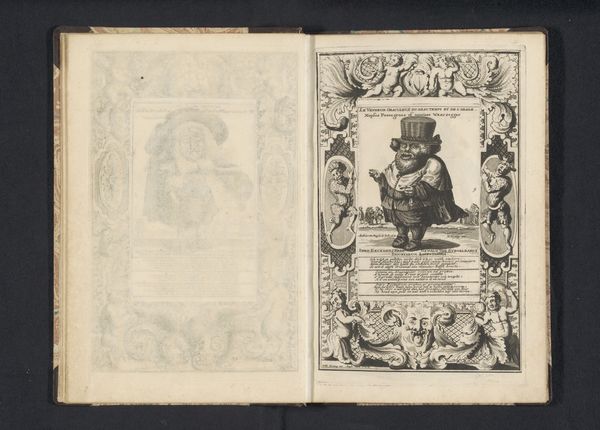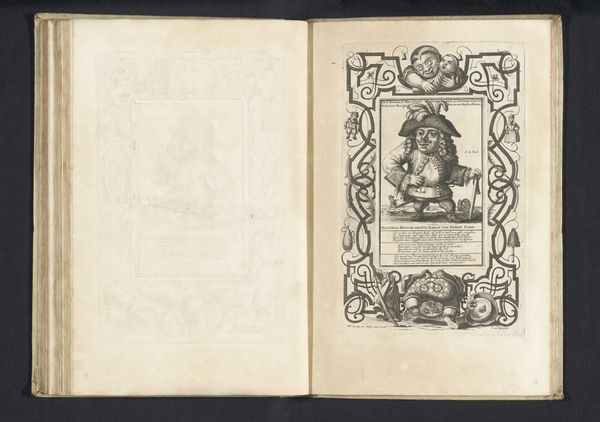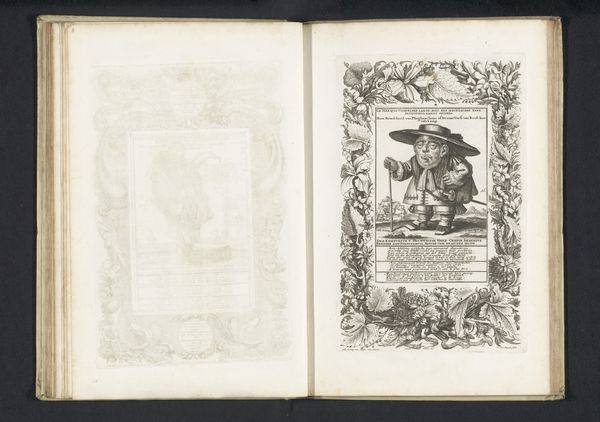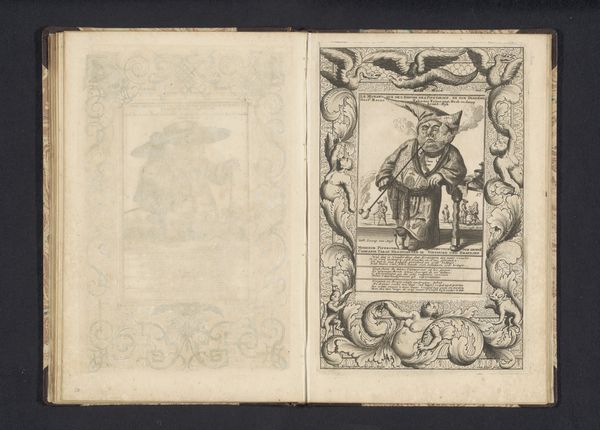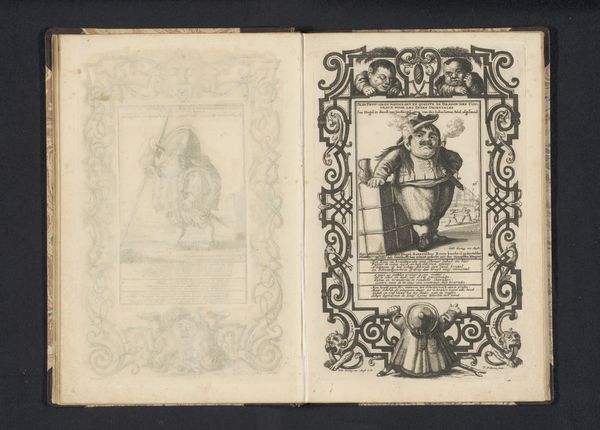
drawing, print, paper, ink, engraving
#
portrait
#
drawing
#
baroque
#
ink paper printed
# print
#
paper
#
ink
#
coloured pencil
#
genre-painting
#
engraving
Dimensions: height 160 mm, width 105 mm, height 275 mm, width 172 mm
Copyright: Rijks Museum: Open Domain
In 1716, Joost van Sassen created this engraving, “De dwerg Hans Breed-hoed van Plughaarheim,” using the intaglio process. This print is the result of a skilled, labour-intensive process. First, the image was incised into a metal plate, likely copper. This required precise hand-eye coordination, and a deep understanding of the burin's behaviour. Ink was then forced into these lines, and the plate pressed against paper, transferring the image. The character's exaggerated features, combined with the ornate border, suggest this was a product of a highly specialized workshop. We can only guess at the number of artisans involved in the making of the illustrated book. The subject’s distorted features remind us that visual culture has often relied on the depiction of marginalized people. Considering the materials, making, and context involved allows us to expand our understanding of this work. It challenges us to question how processes, like intaglio, intersect with broader social narratives.
Comments
No comments
Be the first to comment and join the conversation on the ultimate creative platform.
